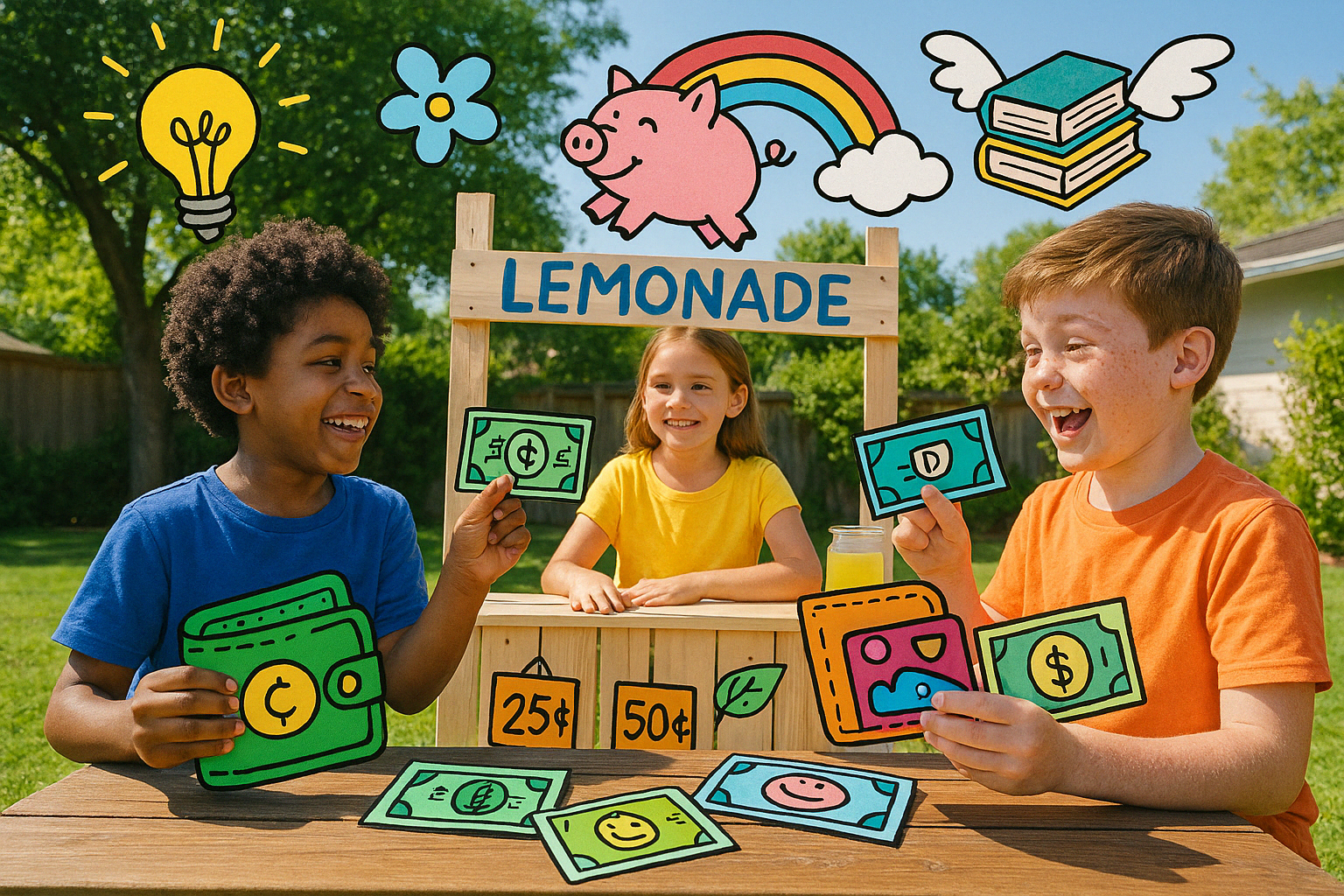

Becoming a parent means having a ton of conversations with your kids: how to stay safe, how to manage emotions… the list goes on.
But one important conversation you don’t want to skip? Teaching your kids about money.
Why you should talk to your kids about money
When kids understand money and how it works, they’re more likely to make smart financial decisions and build good habits that last a lifetime. They’ll know how to manage the money they earn in that first job, think critically before making a big purchase, and prioritize saving for the future.
Plus, a study conducted by researchers at the University of Michigan found that kids as young as five already have distinct emotional reactions to spending and saving money. Starting the conversation early gives parents the chance to talk about money in a positive way, which can have a pretty big impact on how kids spend.
The earlier you start, the more money lessons your kids can learn before they reach adulthood.
How to teach your kids about money
You might want to be having the money conversation, but aren’t sure how.
Fear and uncertainty are some of the reasons why less than 1/3 of parents are currently talking to their kids about money. It can be tough to know where to start.
But the most important thing is just that, to start. You can teach your kids valuable lessons, even if you don’t have a finance degree or know a ton about the stock market. Start with these tips and go from there!
1. Think about their age
A four-year-old might recognize money, but have no idea how it works. A 16-year-old has probably gotten money for their birthday or from a summer job and has some experience spending. Think about how old your kids are and what they know about money already to decide what topics to teach them.
When kids are between the ages of 3 and 5, you might want to start with simple lessons using physical objects, like toy money, play shops, piggy banks, and jars.
As kids grow older and technology becomes a bigger part of their lives, you can help them learn with their smartphones. The Stockpile app makes it super easy for kids and teens to learn about money. They can get their own debit cards, earn interest on their savings, start investing with your approval, and even learn about popular money topics right from the app. Being able to see every transaction and keep track of their money helps them practice smart spending, saving, and investing.
Here are some money lessons for kids, based on their age:
Kids 3-5 years old
- What money is and how it works
- How much different bills and coins are worth
- How to count money
- The difference between needs and wants
Tip: Keep things as simple as possible for this age group!
Kids 5-9 years old
- How people earn money
- Why you should save money
- How to save for something you want, like a small toy or treat
- How much things cost
- How to compare costs on things like grocery store snacks or school supplies
- How to budget your money
- Investing basics: what investing is and why people do it
Tip: Get the Stockpile app to start learning about investing as a family. You can invest for your kids starting with just $5 and bring them into the process to help them learn!
Kids 9-14 years old
- Saving for a big goal, like buying a bike or going on a trip
- Ways to earn money (summer jobs, babysitting, etc.)
- How to spend responsibly
- Interest: what it is and how it works
- How to invest and stock market basics
Tip: This is a great time to get your kid a debit card and a savings that earns interest. With a Stockpile Family Plus membership, you can get both for up to 5 kids.
Kids 14-18
- The difference between debit cards and credit cards
- More advanced investing terms like risk tolerance and diversification
- Investing for future goals, like retirement
- Taxes and how they work
- Paying bills, like rent and phone bills, on time
- How to be smart about influencer marketing on social media
- What a credit score is and what influences it
Tip: Give your teens the freedom to make mistakes and learn from them. The more they learn now, the more prepared they’ll be for the future!
2. Keep it positive
Money can be a really emotional thing. And that’s because your unique background and experiences influence how you feel about it. Maybe you’ve been through times when money was really tight or grew up listening to your parents talk about it in a certain way. And while it’s important to be honest with your kids about your experiences, helping them create a positive money mindset can go a long way.
When kids think about money positively, they’re more likely to get excited about things like budgeting and saving, and less likely to experience feelings of stress, fear, or anxiety around money.
Try to be thoughtful about how you introduce certain topics. For example, when teaching kids budgeting, frame it as something that helps people create a plan for their money, so they can reach their goals, instead of something restrictive. That way, kids learn it isn’t about keeping yourself from spending at all costs, but prioritizing your money for different purposes and spending responsibly.
Rather than responding with “we can’t afford that” when your kids ask for something at the store, you could help them understand the true cost and encourage them to start saving for it. You can even break down how much they’d have to save each week or month to buy it in a certain time frame. This positive approach helps kids feel like anything is possible, but understand that getting the things they want might take time.
3. Bring learning into the real world, with real examples
One day, your kids will have to pay bills, file taxes, and budget a paycheck. They might even want to buy a house or car.
While you don’t have to pull out your tax documents and show your kids exactly how much you make, it can be helpful to bring them into the money things that happen in your life.
For example, you could show and explain your monthly utility bill, take them along the next time you buy a car, or walk them through how you navigated the financial side of an unexpected event, like a house repair or car troubles.
Point out price differences at the grocery store, explain why you decided to buy one thing over the other, and demonstrate wants vs. needs in person (groceries for the week vs. sweet treats, a winter coat vs. cool sneakers).
4. Try fun games & challenges
More learning happens when kids are having fun!
Try introducing money topics in creative ways. Interactive games like Money Bingo can help younger kids learn the basics about money and what it’s worth. You can even use colorful cups or jars to represent different categories (spending, saving, investing) and teach kids to “budget” with marbles or beads.
For older kids and teens, you can:
- Challenge them to reach a savings goal by a certain date.
- Give them a budget to buy groceries for your next family dinner. They’ll learn to compare prices and make smart spending decisions.
- Have them try a “no spend challenge.” Encourage them to go a week or two without spending on wants and use the money they saved to invest in a stock or ETF.
- Save for a family trip together! Have each family member put aside some money each month for a mini-vacation (this could be something as simple as a day trip).
5. Give them an allowance
When kids earn and manage their own money, they learn the value of things like budgeting first-hand. If they only have $15, but spend $14 of it at Starbucks, they’ll learn to adjust their spending habits pretty quickly.
Consider giving your kids a weekly allowance. The Stockpile app makes this super easy with automatic transfers: just choose how much you want to send every week, and decide what percentage goes to savings, investing, and spending.
This doesn’t need to be a lot of money, either! Even $10 a week can help kids build good habits.
Financial literacy for kids: Teach money smarts with Stockpile
Introducing your kids to the world of money is one of the best things you can do as a parent. And you don’t have to do it alone! With the Stockpile app, your family can learn to save, invest, and spend together, all while earning discounts on college tuition.1
By the time your kids head off to college, you’ll be less stressed about the cost, and they’ll understand how to manage money responsibly, a valuable skill for every chapter of life.

